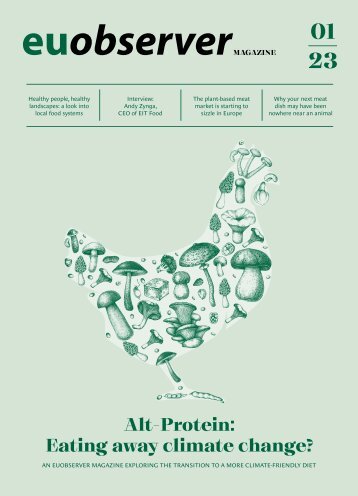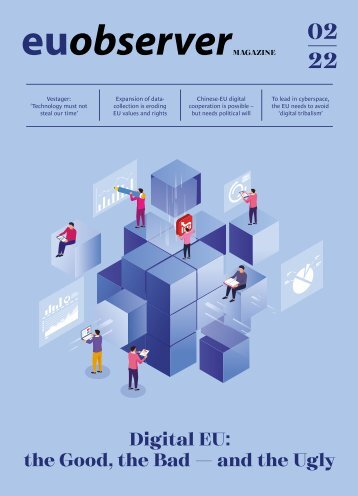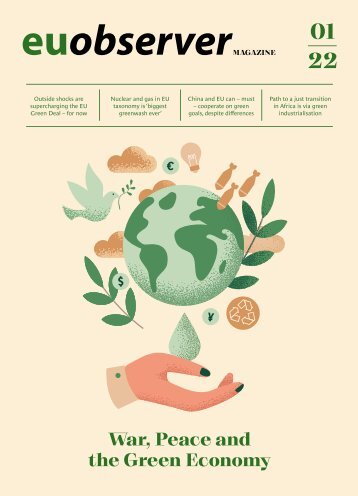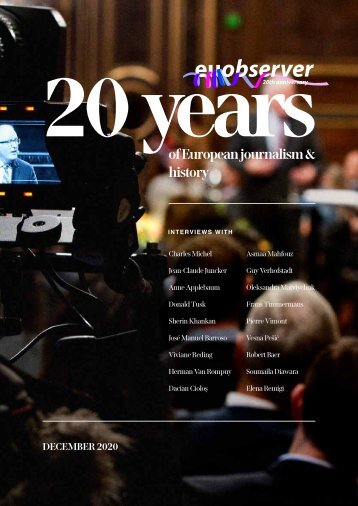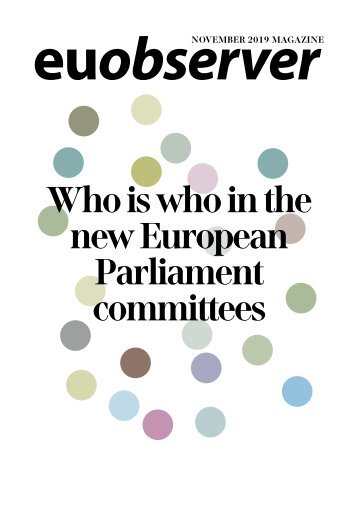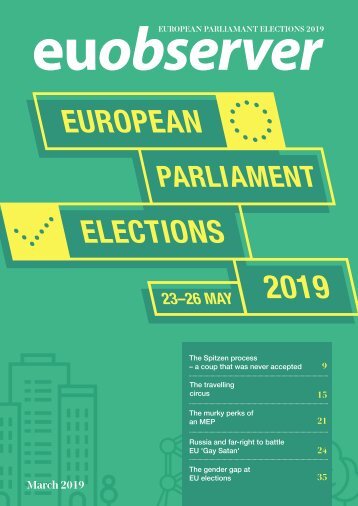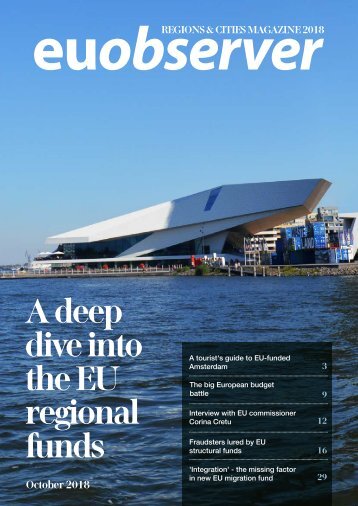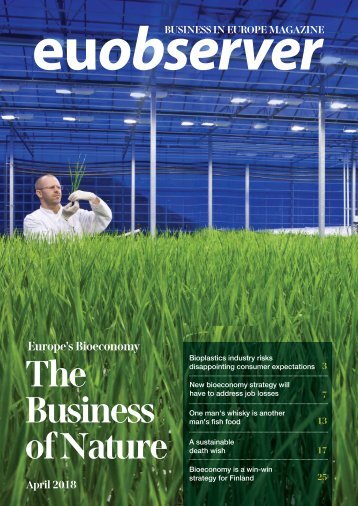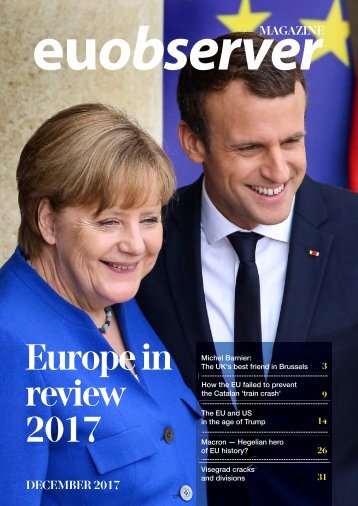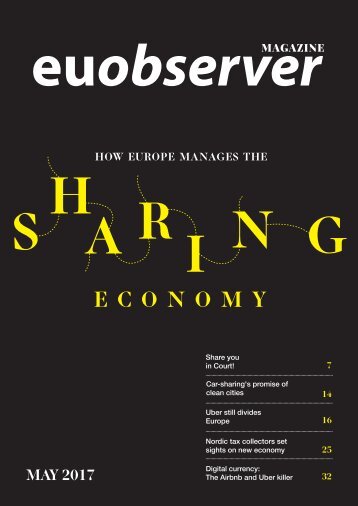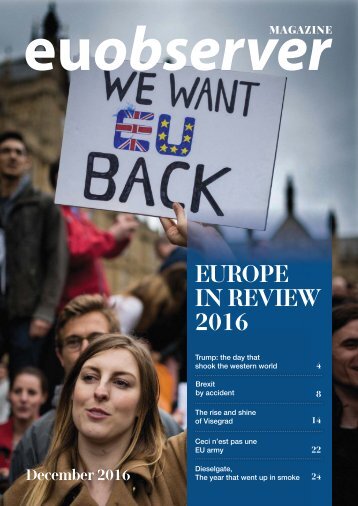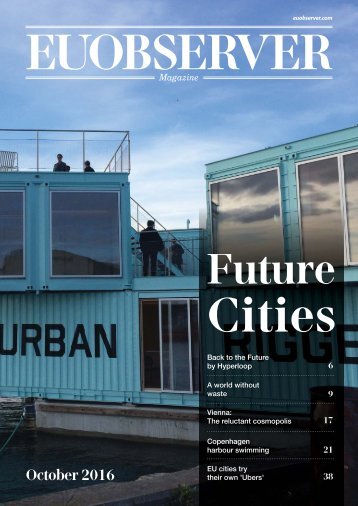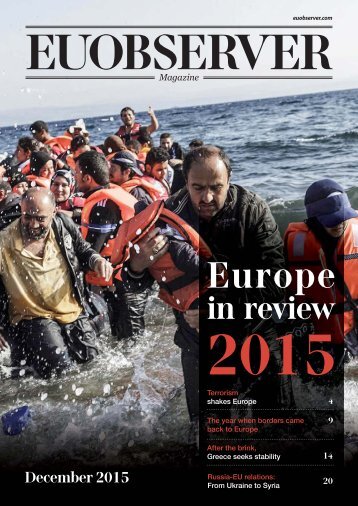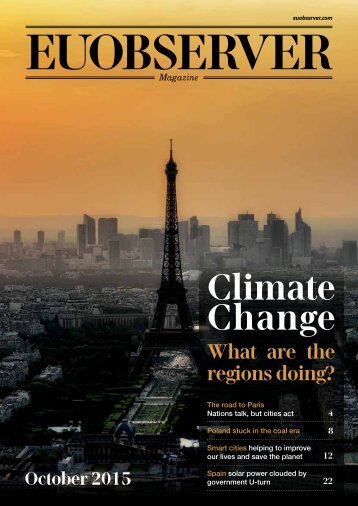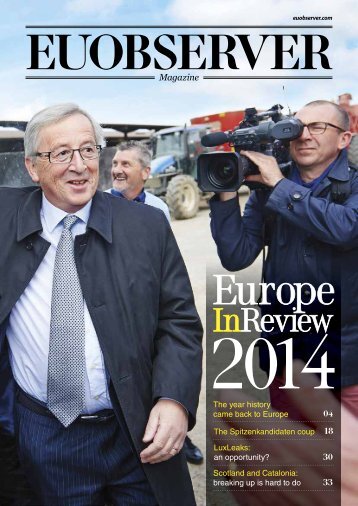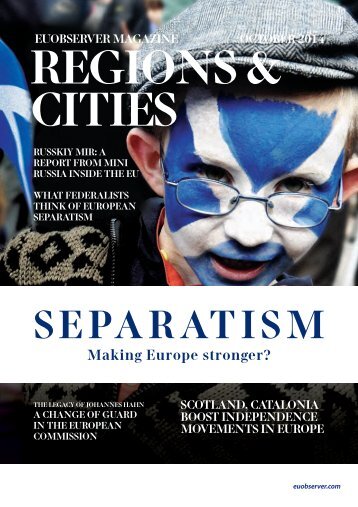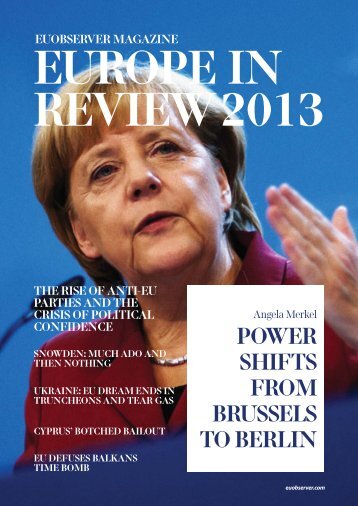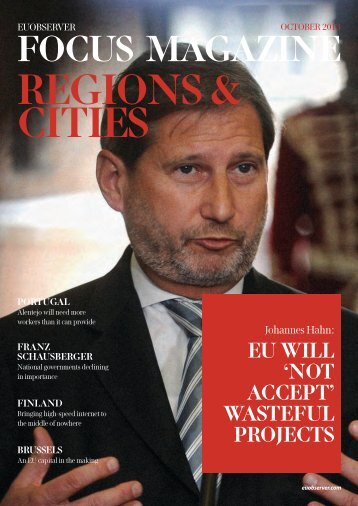Separatism: Making Europe stronger?
- Text
- Mir
- Efa
- Regions
- European
- Cities
- Regional
- Scotland
- Catalonia
- Economic
- Projects
- Referendum
- Scottish
REGIONS & CITIES OCTOBER
REGIONS & CITIES OCTOBER 2014 SEPARATISM – MAKING EUROPE STRONGER? It is October 2014. Europe is still digesting Scotland’s recent referendum on independence. Scots ultimately decided to remain in their 307-year union with the rest of the UK. But it sparked quite a conversation. And the promises made in the run-up to the vote could lead to change across the board; in Scotland, England, Wales and Northern Ireland. The prospect that a part of the UK – a major EU member state – could simply break off and become a new country attracted headlines worldwide and inspired regionalist and separatist movements elsewhere. But the independence question is not finished. Soon all eyes will be on Catalonia, the Spanish region up for a consultative referendum on independence on 9 November. What does this bout of separatism mean for the European Union? Will it strengthen or weaken integration? It will certainly give regional representatives something extra to talk about as they gather for this year’s Open Week in Brussels. EUobserver Magazine takes a look at some of the issues. EDITORIAL ADDRESS EUobserver Magazine Rue Belliard 203, bté 5 1040 Bruxelles Belgium contact@euobs.com Editor: Lisbeth Kirk Editorial contributors: Honor Mahony, Andrew Rettman, Valentina Pop and Benjamin Fox Article layout: Tobias Andreasen Cover photo: Phyllis Buchanan - The photo is made available under Public License ADVERTISING EUobserver Magazine Rue Montoyer 18B 1000 Brussels Belgium Filip Lugovic fl@euobs.com PRINT PMR DISTRIBUTION EUobserver Magazine Rue Montoyer 18B 1000 Brussels Belgium Meg Chang mc@euobs.com Price per copy €4,75 + postage, excl vat / discounts on larger purchases PUBLISHER EUobserver.com ASBL www.euobserver.com MAKING SENSE OF THE EU EUobserver is an independent online newspaper which values free thinking and plain speech. We aim to support European democracy by giving people the information they need to hold the EU establishment to account. HIGH QUALITY JOURNALISM EUobserver is a non-profit organisation established in Brussels in 2000. It is financially and editorially independent of the EU institutions. Our team of experienced journalists file daily news reports from the EU capital and do in-depth investigations on topics of special interest. If you want EUobserver to look into a specific issue, please contact our editors. We protect our sources.
New EU regional aid rules have inbuilt ‘tensions’ New rules governing how EU is spent have already resulted in better thought-out projects, says the European Commission, but local politicians grumble that they continue to drown in red tape. By: Honor Mahony how EU aid money is spent HAVE already resulted in better thoughtout projects, says the European Commission, but local politicians grumble that they continue to drown in red tape. In place for the 2014-2020 budget period, the revamped system links regional aid money (€325bn over the seven years) to sound economic governance and requires projects to slot in with the EU’s long-term economic goals. EU regional affairs commissioner Johannes Hahn says there has been a “clear shift” in funding priorities towards energy efficiency, social inclusion and a low carbon economy. Lithuania, for example, will see 50 percent of its €8bn programme (€6.8bn from the EU and €1.2bn from Lithuania itself) spent on achieving a low-carbon economy. THE RULES REMAIN COMPLICATED But discussions between Brussels and member states are slow as both the EU and regional bureaucracies adjust to focussing not on whether the money has been spent – this has led to not-always-useful roads and airports being built in the past – but on whether it has been spent well. Lithuanian finance minister Rimantas Sadzius summed the negotiations up as being “long and very difficult at times”. And while the aims of cohesion funding have become more structured, the rules remain complicated. Garrelt Duin, North Rhine- Westphalia’s economy minister, noted that when he cut down on the number of people involved in working on EU regional aid, he fell foul of EU rules. “We had 100 people on the administration of [cohesion policy]. It looked like a plan for a nuclear plant,” he said at a Brussels conference in September. “We cut it to 10 people for the new programming period. The EU commission then came along and said ‘you need to provide 50 interim liaison points’. So I have just cut the number of posts and now we have to increase them again.” Alberto Nunez-Feijoo, president of Galicia, said the simplification issue was on “everyone’s intray”. The other issue on everyone’s intray is what so-called ‘macro-economic conditionality’ will mean in practice, with critics fearing that regions risk getting punished for bad behaviour by the central government. Nunez-Feijoo urged “flexibility” in how the rules are interpreted but Jyrki Katainen, who is to be a powerful vice-president in the incoming EU commission, noted that “if the macroeconomic situation is weak, then investments for the future don’t bear fruit”. The two comments reflect the broader debate in Europe about the merits of constant deficit-cutting. THERE ARE TENSIONS IN THE SYSTEM The European Parliament has said it will keep a close eye on how they are implemented. Iskra Mihaylova, head of the EP’s regional affairs committee, said deputies will ensure “the interests of the regions are protected”. Meanwhile, experts are sceptical about the feasibility of tying EU aid to good economic governance. Professor Iain Begg of the London School of Economics notes that the specific policy recommendations given by the commission as part of the EU’s budgetary semester are sometimes highly controversial - such as pension reforms in Latvia or structural reforms in Italy. “I see real difficulty in translating the macro-economic governance and sound economic governance into the application of cohesion policy. There are tensions in the system.” REGIONS & CITIES 2014 3
- Page 1: EUOBSERVER MAGAZINE OCTOBER 2014 RE
- Page 5 and 6: EU regional projects see ‘encoura
- Page 7 and 8: ALONIA BOOST EMENTS IN EUROPE are a
- Page 9 and 10: advertisement YES! Sí sí! Votarem
- Page 11 and 12: The police is investigating three m
- Page 13 and 14: est of the UK. Despite being the co
- Page 15 and 16: GLASGOW: Ahead on Roma inclusion Gl
- Page 17 and 18: advertisement European climate act
- Page 19 and 20: Civil Guard to go to the “rebelli
Inappropriate
Loading...
Mail this publication
Loading...
Embed
Loading...

